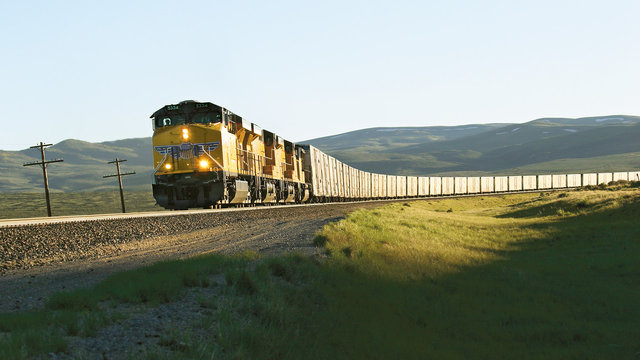
September 7, 2021
What Is a Boxcar Rail Car?
When you think “rail car,” chances are your mind’s eye pictures a boxcar. Featured in books, movies and television, boxcars may be one of the most iconic pieces of railroad equipment and are certainly the most recognizable. Perhaps that’s because boxcars are one of the oldest rail car types, appearing first in the 1830s. For over a century, boxcars were used to ship most non-bulk freight (even cars!). That changed in the 1960s, when more specialized cars came on the market that catered better to specific types of freight. Even so, boxcars continue to play an important role in shipping all sorts of freight, from paper to canned goods to appliances.
What Can You Ship in a Boxcar?
Boxcars are very versatile and can carry most kinds of freight. Because they are enclosed, boxcars are used to carry loads that require protection from the weather. Common products shipped in boxcars include:
- Forest products
- Paper
- Pulp
- Automotive parts
- Newsprint
- Rolled paper
- Building materials
- Palletized goods
- Appliances
- Food products
- Canned goods
- Beverages
- Grain
- Bagged flour
- Bagged agricultural products
- Consumer products
- Metal products
- Manufactured goods
Adding to their versatility, boxcars can be insulated, refrigerated and cushioned to protect contents of all types from damage or temperature extremes during transit.

What Does a Boxcar Look Like?
Boxcars look…a lot like a box (thus their name). A typical boxcar is rectangular in shape, is completely enclosed, and has sliding doors or plug doors on the sides.
How Big Is a Boxcar?
Boxcars can range in size, but typically their interior lengths are between 50 feet and 60 feet long with a minimum width of 9 feet inside.
What Are the Different Boxcar Types?
- 50 Foot Plain Boxcar — 50 foot plain boxcars carry goods like paper, lumber, packaged goods and beverages. The outside of these boxcars is between 55 and 60 feet long; inside, their interior length averages 50 feet and they have a cubic capacity ranging from 4,950 to 7,300 cubic feet. They can carry loads ranging between 146,000 to 215,500 lbs.
- 60 Foot Plain Boxcar — 60 foot plain boxcars carry goods like coil products, paper, lumber, packaged goods and beverages. The outside of these boxcars is between 66 and 69 feet long; inside, their interior length averages 60 feet and they have a cubic capacity ranging from 5,830 to 7,633 cubic feet. They can carry loads ranging between 165,000 to 206,500 lbs.
- Insulated Boxcar — Insulated boxcars carry canned goods, packaged goods and beverages. The outside of these boxcars is between 57 and 71 feet long; inside, they have a cubic capacity ranging from 4,700 to 6,560 cubic feet. They can carry loads ranging between 133,400 to 200,000 lbs.
- Refrigerated Boxcar — Refrigerated boxcars are heavily insulated and are equipped with cooling units that keep fresh, frozen and perishable goods at optimal temperatures during transit. Boxcars used for refrigerated shipments are also referred to as “reefers.” They range in interior lengths of 64 and 72 feet.

What Are the Different Boxcar Door Types?
Boxcars come in two door types, the plug door and the sliding (corrugated) door, and can have one or two doors per side, resulting in four options:
- Single Plug
- Single Slider
- Double Plug
- Double Slider
Single doors vs. double doors: Single doors have a width of 10' or 12' for and double doors are 16' wide.
Sliding doors: The sliding door system keeps both the weather and direct sunlight out. It slides using two rollers in a door track and can be opened or closed by pulling on the door handles.
Plug doors: The plug door system closes with a final inward movement (similar to most van sliding doors) that seals the door flush with the interior of the boxcar. This provides a much better seal than the sliding door boxcar. A rotating lever on the door activates a gear system to "plug" and "unplug" the door.
How Is a Boxcar Loaded and Unloaded?
Originally, boxcars were loaded and unloaded by hand. More recently, they are unloaded by forklifts or other mechanical devices to make loading and unloading safer and faster.
With traditional boxcars, products are loaded and unloaded through the sliding or plug doors on the side of the rail car. These doors are located in the center or middle of the box cars.
Why Are Boxcars Called “Boxcars”?
Boxcars are named for their shape, which resembles a box.
Boxcar Fun Facts
- Originally, boxcars were made of wood, which was sturdy but made them a fire hazard and shortened their useful life. For that reason, in the late 1960s, wooden boxcars were outlawed and slowly removed from railroad fleets. The new cars had steel frames, which made them fire resistance and also made it possible to construct longer cars that could carry more product. These cars have much longer lifespans, typically lasting 50 years.
- Boxcars were used for bulk commodities like coal until open-top hoppers and covered hoppers came on the market, making it easier to load and unload bulk products.
- Boxcars were used to ship automobiles until the advent of autoracks in the 1960s, which carried more cars in the same amount of space and were easier to load and unload.

Learn More
To learn more about boxcars or shipping paper, canned goods, bagged agricultural products, lumber, packaged goods or just about anything else by rail, get in touch.
Want to learn more about other types of rail car equipment, including autoracks, covered hoppers, tank cars, hoppers, flatcars and gondolas? Check out our rail car type guide.
Related Articles